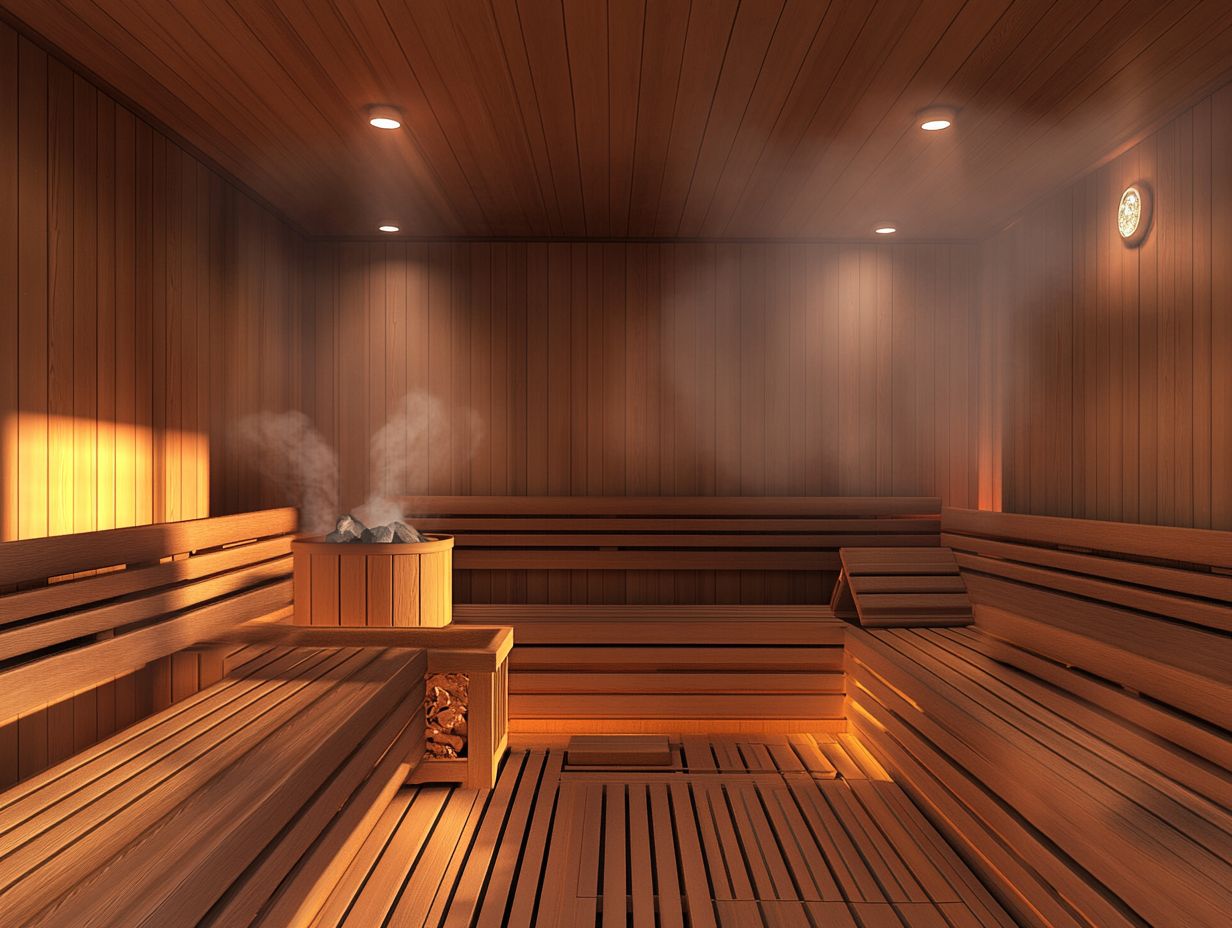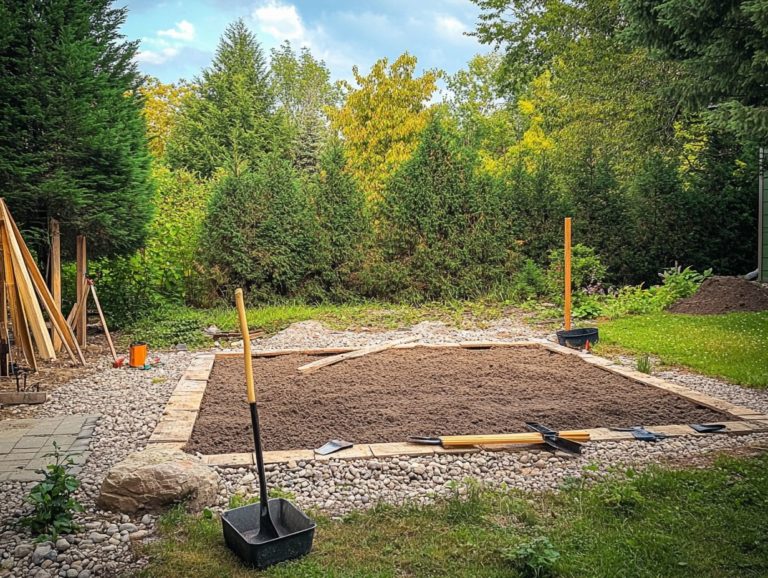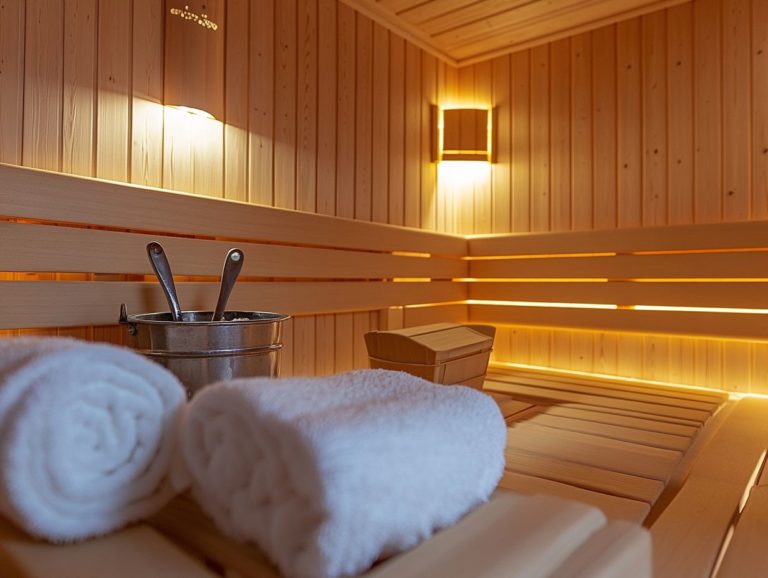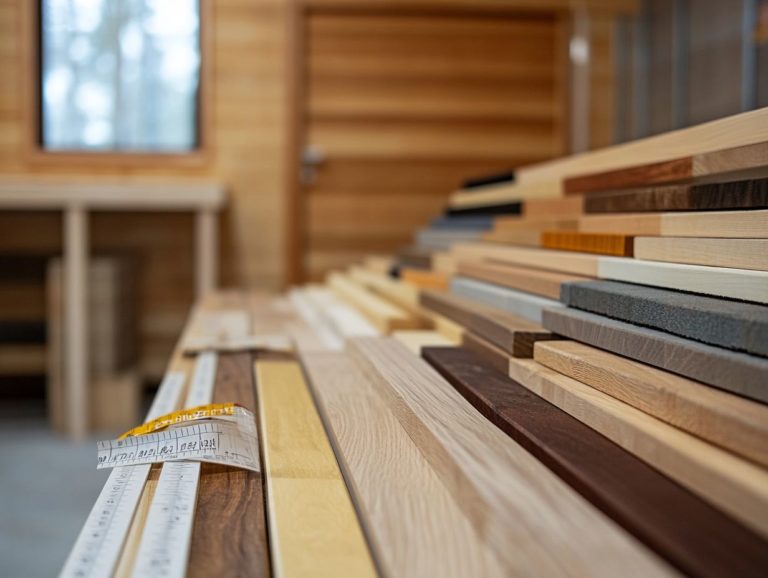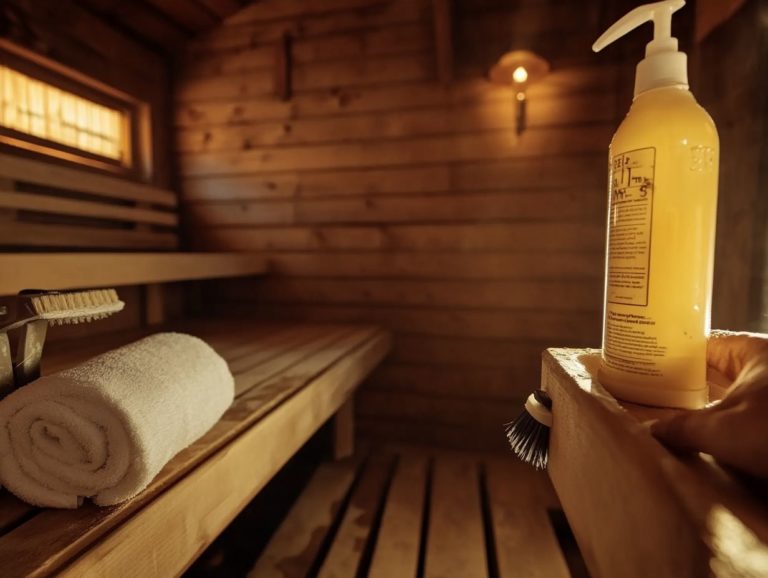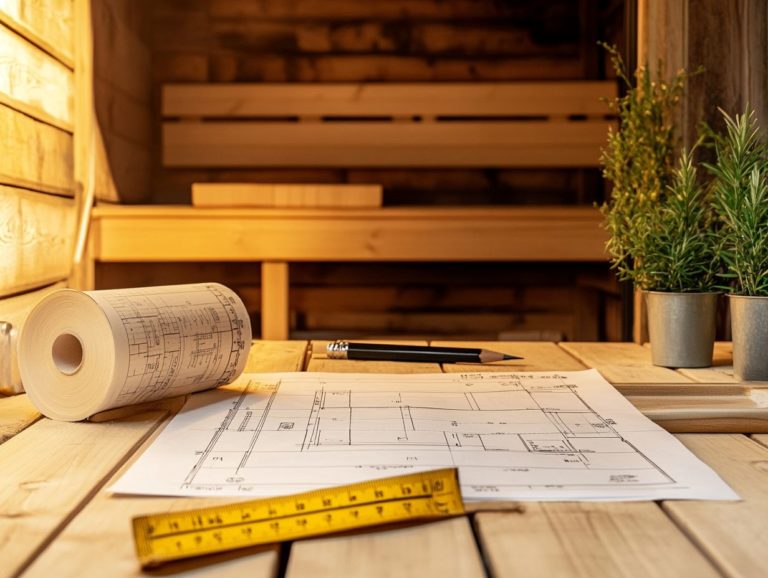“Sauna Ventilation: Essential Tips for DIY Builders”
Creating the perfect sauna experience involves more than choosing the right wood and heating elements. Proper ventilation is crucial for a safe and comfortable environment.
This article explores the importance of ventilation, reviews different systems you can use, and highlights key factors to consider based on your sauna’s size and layout.
You’ll find practical DIY tips for installation and maintenance to keep everything running smoothly.
Get ready to transform your sauna experience into something enjoyable and efficient!
Contents
- Key Takeaways:
- The Importance of Proper Sauna Ventilation
- Types of Sauna Ventilation Systems
- Factors to Consider When Choosing a Ventilation System
- DIY Tips for Installing Sauna Ventilation
- Maintenance and Troubleshooting
- Frequently Asked Questions
- What are some important considerations for sauna ventilation when building your own sauna?
- Should I use a traditional chimney or a venting system for my sauna?
- How many ventilation openings should I have in my sauna?
- What type of material should I use for my sauna’s ventilation openings?
- How often should I clean and maintain my sauna’s ventilation system?
- Can I add a fan to my sauna for better ventilation?
Key Takeaways:
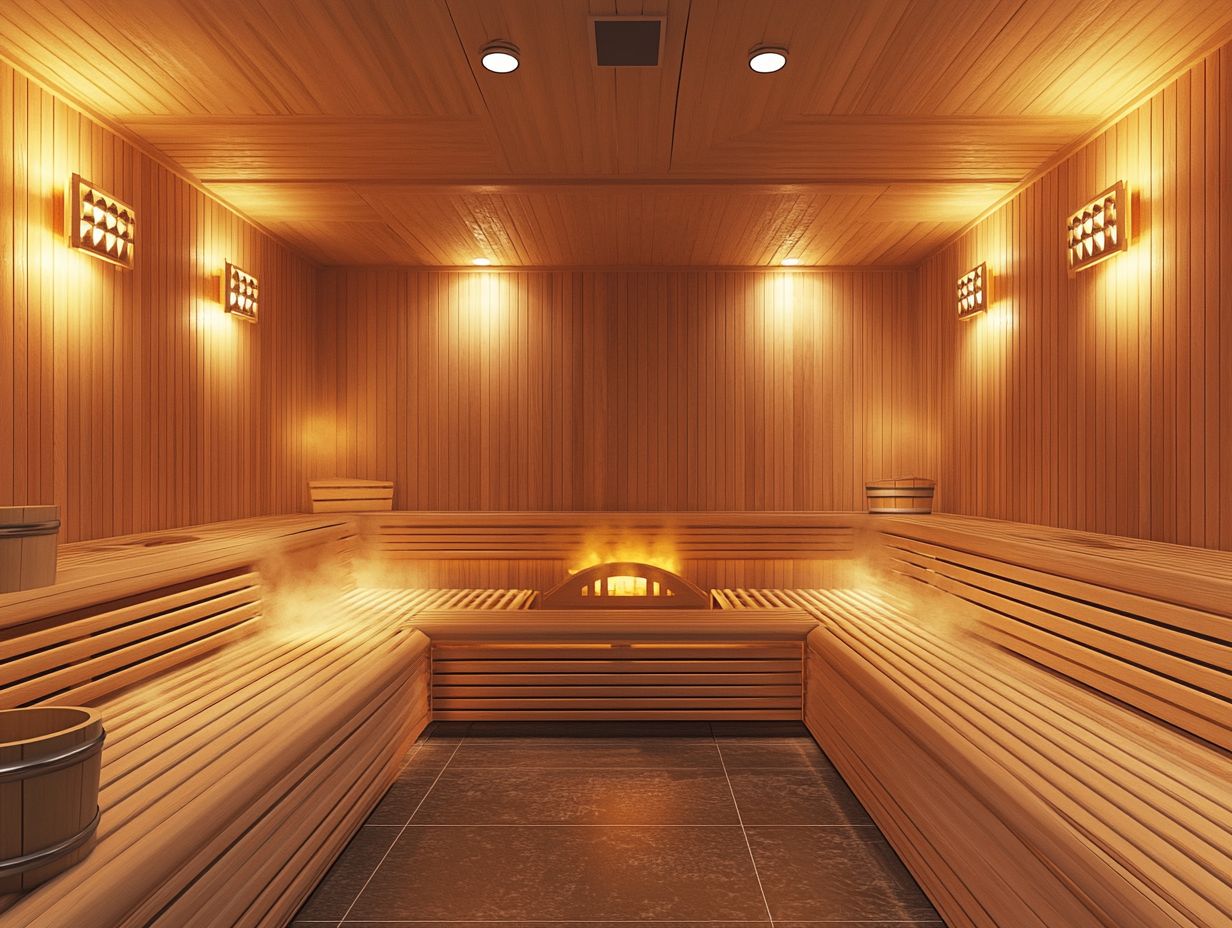
- Proper sauna ventilation is crucial for maintaining a safe and enjoyable environment.
- There are various types of ventilation systems available, so consider factors like sauna size and cost when choosing the right one.
- Follow a step-by-step guide and regularly maintain your sauna ventilation system to ensure it runs smoothly and troubleshoot any common issues that may arise.
The Importance of Proper Sauna Ventilation
Proper sauna ventilation is vital for ensuring an enjoyable and healthy sauna experience. When ventilation falls short, humidity levels can soar, resulting in excess moisture that compromises air quality and fosters conditions that may lead to health issues.
You need to use good air circulation methods like exhaust pipes, supply pipes, and adjustable vents to guarantee the flow of oxygen-rich air while expertly managing temperature and humidity levels. Additionally, following proper sauna hygiene practices is essential for maintaining a clean environment, which will elevate your sauna experience to new heights of comfort and wellness. For more information, check out sauna hygiene best practices.
Why Ventilation is Necessary for Saunas
Ventilation is essential for your sauna, ensuring optimal air quality and keeping humidity levels in check to prevent potential health issues.
With proper ventilation, you allow fresh air to flow, reducing the moisture that naturally builds up in such a warm environment. When humidity rises unchecked, it can become a breeding ground for mold and bacteria, which can adversely affect your respiratory health. Inadequate oxygen levels can make a sauna session uncomfortable.
By maintaining a balanced influx of fresh air, you not only elevate your sauna experience but also make it easier to breathe, promoting relaxation and enhancing your overall well-being.
Types of Sauna Ventilation Systems
You’ll find a variety of sauna ventilation systems designed to manage humidity and air circulation effectively, each with its own distinct advantages.
Mechanical ventilation systems use active vents and air exchange mechanisms to control airflow, ensuring a consistent environment. In contrast, passive vents harness natural forces for air circulation, offering a more organic approach.
Another option to consider is gravity-based ventilation, which plays a vital role in regulating temperature and humidity, enhancing your overall sauna experience.
Overview of Different Ventilation Options
When considering sauna ventilation, it’s crucial to understand the various options available, such as mechanical ventilation, passive vents, and gravity-based ventilation. Each method plays a pivotal role in creating a comfortable environment while prioritizing safety and efficiency.
Mechanical ventilation uses fans to actively circulate air, ensuring consistent temperature and humidity control perfect for larger or heavily used saunas. In contrast, passive vents facilitate the natural flow of fresh air, relying on airflow dynamics, making them particularly effective for smaller, privately-owned saunas. Regular upkeep, including understanding the benefits of professional sauna maintenance, can enhance the performance of both systems.
Gravity-based ventilation utilizes the natural buoyancy of warm air, offering a straightforward yet effective solution, especially in traditional sauna designs. For homeowners, mastering sauna maintenance and understanding these mechanisms gives you the power to tailor your ventilation strategies to meet your sauna’s specific needs.
Factors to Consider When Choosing a Ventilation System

Selecting the ideal sauna ventilation system requires careful thought. You should consider the size and layout of your sauna, as well as important factors like cost and energy efficiency.
A well-designed ventilation system should match the dimensions of your sauna to meet its specific ventilation needs. This is essential for achieving optimal air quality.
Size and Layout of Sauna
The size and layout of your sauna will greatly affect its ventilation needs. This makes it crucial to give careful thought to these aspects during the planning phase of your sauna construction.
When designing your sauna, several factors will come into play, such as the number of occupants, the type of heating element you choose, and the materials you select for the build. If you opt for a larger sauna, you may find that additional vents are necessary to maintain a steady flow of fresh air while effectively expelling stale air. Additionally, it’s important to follow sauna safety best practices for home users to ensure a safe and enjoyable experience.
By optimizing airflow through well-placed intake and exhaust openings, you can create an inviting atmosphere that enhances your sauna experience.
Consider adding features like adjustable vents or fans. These allow you to customize ventilation to your personal preferences and the unique layout of your space.
Cost and Energy Efficiency
Cost and energy efficiency are critical factors when evaluating different ventilation solutions for your sauna. These aspects impact both your initial investment and your long-term operational costs.
By thoroughly assessing these elements, you can make smart choices that improve your sauna experience. Making wise decisions creates a comfortable environment and helps you save on energy bills over time.
Implementing best installation practices, such as proper duct placement and using high-efficiency fans, can significantly enhance the benefits of an energy-efficient system. Adding smart technology to monitor and adjust ventilation can lead to impressive savings. Finding a thoughtful balance between cost and energy efficiency is not just a smart choice; it s a long-term investment in sustainability and comfort.
DIY Tips for Installing Sauna Ventilation
Installing sauna ventilation can be a rewarding DIY endeavor. When you follow the best practices for installation, you ll ensure effective airflow and meet all necessary ventilation requirements.
Step-by-Step Guide for Proper Installation
A proper installation of sauna ventilation involves several key steps. This approach ensures compliance with best practices while achieving effective airflow testing.
- Start by preparing your sauna space. Identify the optimal locations for both intake and exhaust vents. Gather necessary tools like a drill, ducting materials (tubes that carry air), and a level for a smooth process.
- Once you’ve marked the placements, the next step is to install the ducts securely to the sauna’s walls without any leaks.
- After installation, it’s crucial to test the airflow. You can use an airflow meter to measure air velocity and ensure everything is functioning correctly.
Keep your sauna in top shape by regularly checking and adjusting! This will enhance the system’s efficiency and create a comfortable and safe environment for your sauna experience.
Maintenance and Troubleshooting
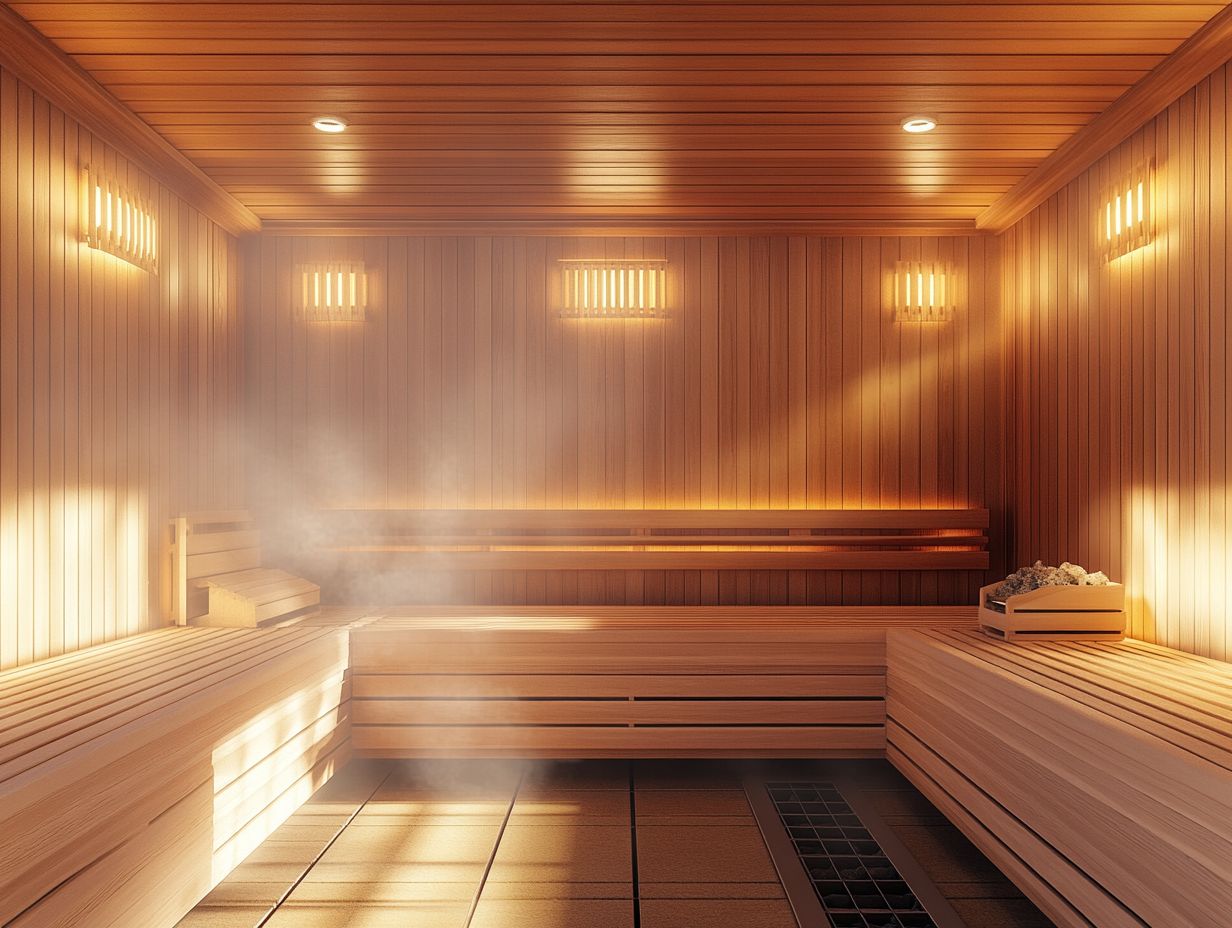
Regular maintenance and troubleshooting are essential to ensure your sauna ventilation system operates at peak performance. Over time, various issues may arise that can affect its efficiency. Staying proactive is key to enjoying a consistently optimal sauna experience.
How to Keep Your Sauna Ventilation System Running Smoothly
Maintaining your sauna ventilation system is essential for enhancing air quality and ensuring peak performance. To achieve this, it is important to schedule regular cleanings and periodic inspections of the various components.
Pay special attention to the air ducts. Dust buildup can obstruct airflow and undermine the system’s effectiveness. Regularly inspect the filters and replace them as needed, since clean filters are vital for promoting fresh air circulation.
Don’t underestimate the significance of evaluating the fans and exhaust systems. Make sure the fans and exhaust systems are functioning correctly to ensure optimal ventilation. By diligently attending to these tasks and understanding why regular maintenance is crucial for saunas, you can greatly enhance your sauna experience while fostering a healthier environment.
Common Problems and Solutions
Identifying common issues with sauna ventilation systems is crucial for timely troubleshooting and effective solutions. By recognizing problems such as insufficient airflow, humidity control issues, and temperature fluctuations, you can enjoy a perfect sauna experience.
For example, restricted airflow can hinder the sauna’s ability to reach optimal temperatures and circulate fresh air. Take the time to inspect the vents and clear any obstructions to significantly enhance air circulation.
Humidity control is vital for preventing mold growth and maintaining a comfortable environment. Using a device that measures humidity allows you to monitor levels and adjust ventilation as needed to manage excessive moisture effectively.
By implementing these strategies, you ll create the ideal sauna atmosphere that elevates your relaxation experience.
Frequently Asked Questions
-
What are some important considerations for sauna ventilation when building your own sauna?
When building a sauna, proper ventilation is crucial for maintaining a safe and comfortable environment. Important factors to consider include the size of the sauna, the type of heating element being used, and the placement of ventilation openings.
-
Should I use a traditional chimney or a venting system for my sauna?
It is recommended to use a venting system for sauna ventilation rather than a traditional chimney. A venting system allows for more effective air circulation and prevents excess heat buildup, reducing the risk of fire hazards.
-
How many ventilation openings should I have in my sauna?
The number of ventilation openings needed for a sauna depends on its size and heating element. As a general rule, there should be one ventilation opening near the floor and one near the ceiling for proper air circulation.
-
What type of material should I use for my sauna’s ventilation openings?
When choosing materials for ventilation openings, use non-combustible materials such as metal or ceramic. Avoid using wood or other flammable materials that may pose a fire hazard in the high heat and humidity of a sauna.
-
How often should I clean and maintain my sauna’s ventilation system?
Regular maintenance and cleaning of your sauna’s ventilation system are important for ensuring its effectiveness and longevity. Clean the ventilation openings at least once a month and check for any obstructions or damage.
-
Can I add a fan to my sauna for better ventilation?
Yes, a fan can be a useful addition to your sauna’s ventilation system. It can help to increase air circulation and improve overall comfort. However, make sure to use a fan specifically designed for sauna use and follow all safety precautions.
Start planning your sauna ventilation maintenance today for the best experience!

